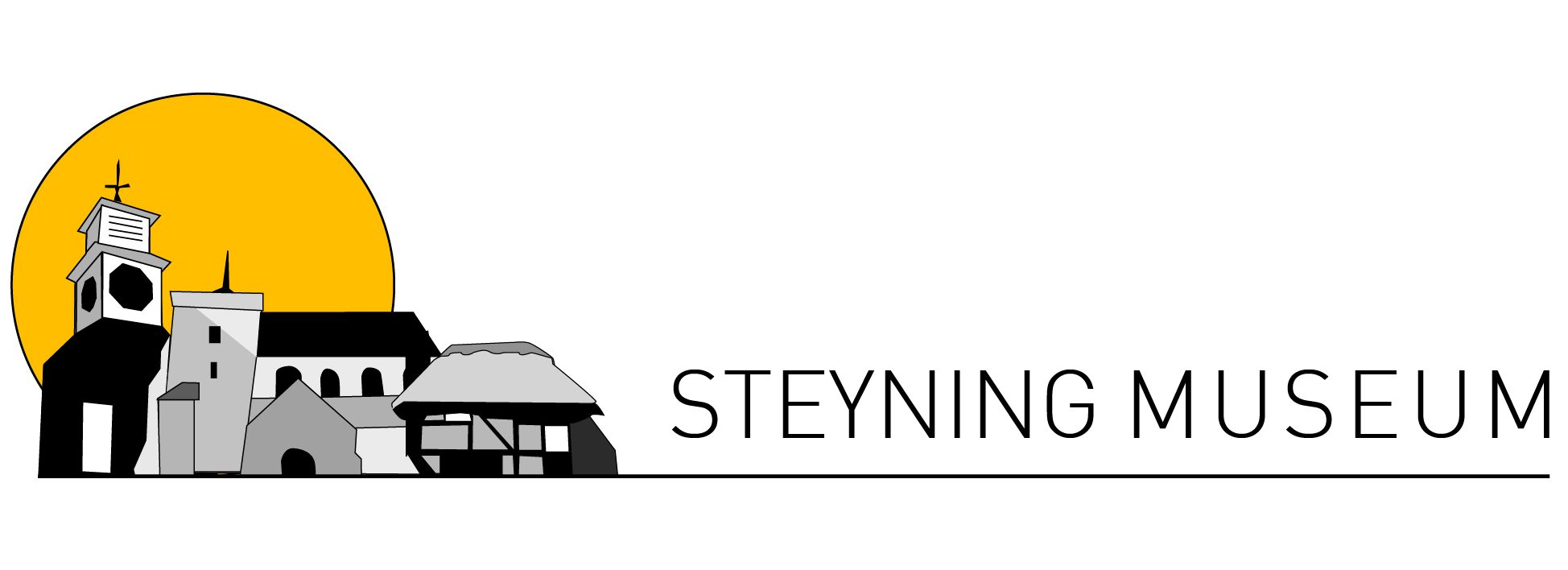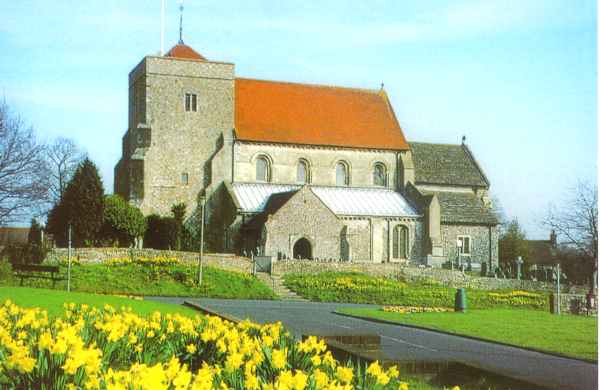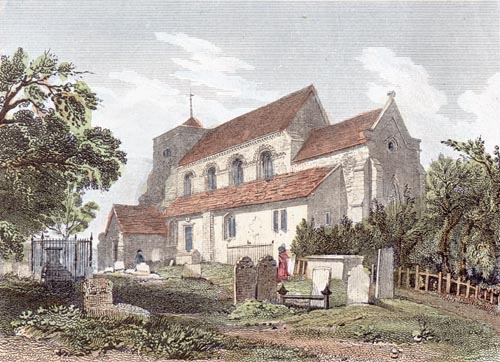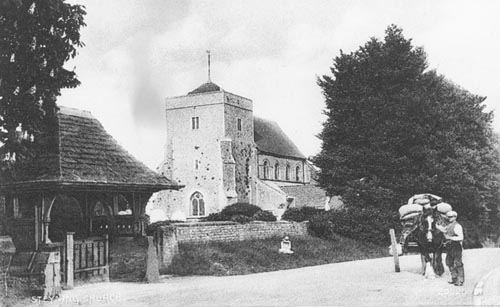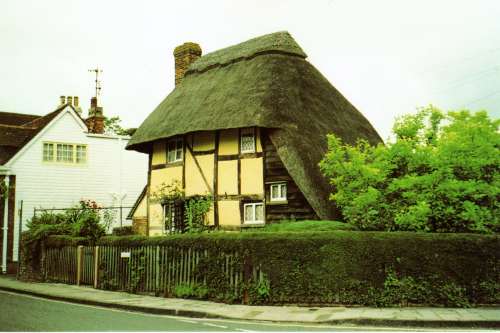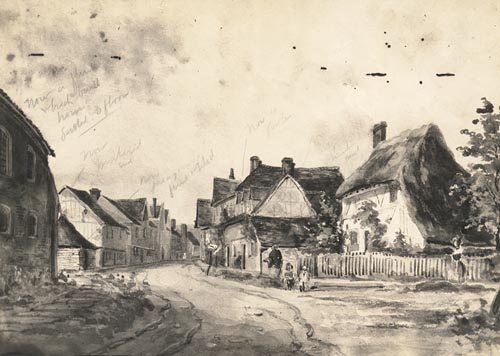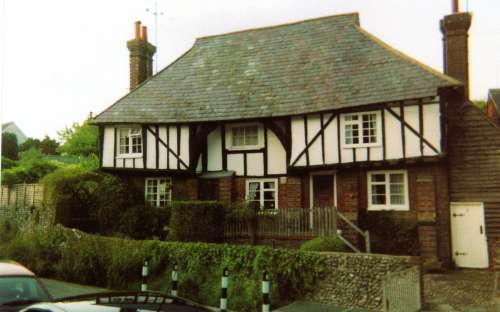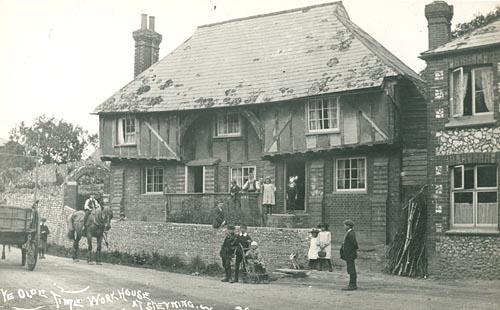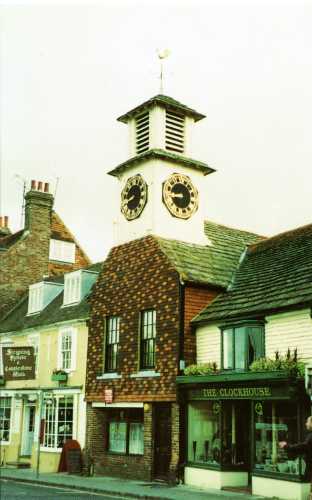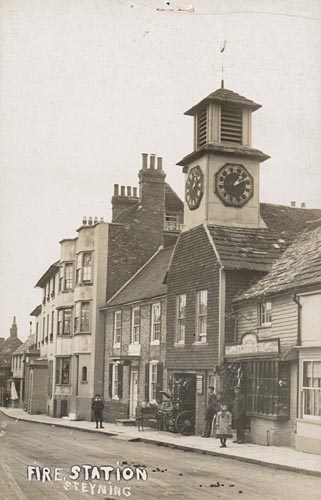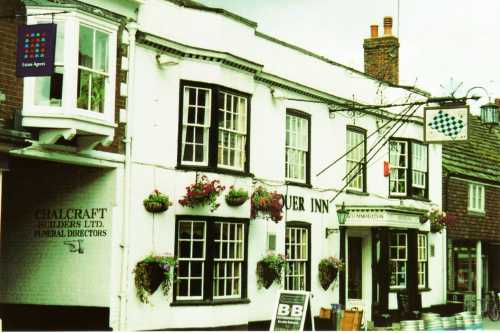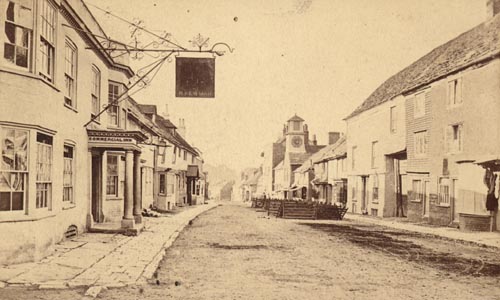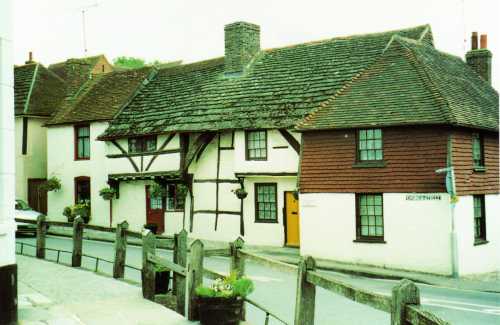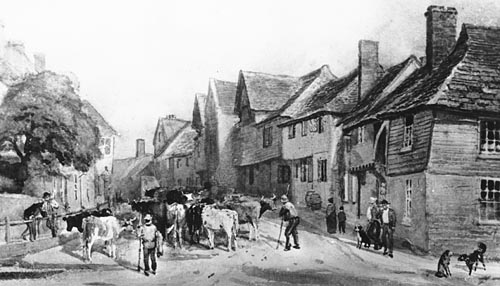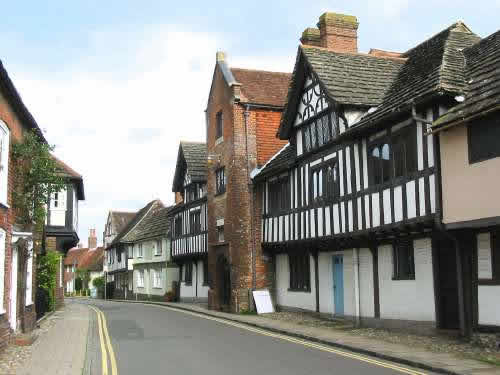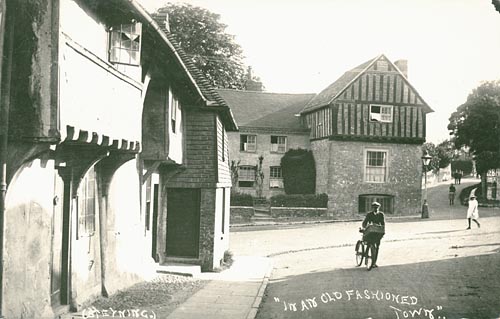but does the old place still look the same?
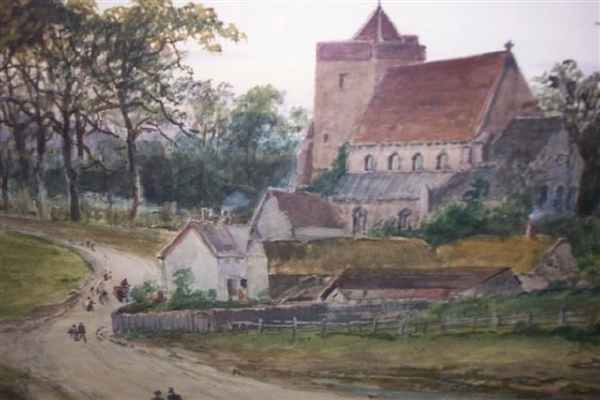
There have been visitors flocking to Steyning since Saint Cuthman’s shrine first attracted Saxon pilgrims to the church. The town had a thriving port and links to key communication routes.
After the Norman Conquest the port declined, but markets and fairs drew people from across Sussex and as far away as Wales. Cattle, sheep, horses and other livestock came too. The Steyning horse fair continued until 1976.
The old coaching route between London and the South Coast brought many weary travellers to Steyning. After a change of horses and perhaps a night’s rest at the White Horse or the Chequer Inn, passengers were soon back on the bumpy road to complete their gruelling journey.
In 1861, the steam train brought a new lease of life to the town and its market. The first day-trippers appeared. Horses eventually made way for the car and after one hundred years of service, the railway suffered too. Steyning station closed in 1966 and the railway line became the road route for the Steyning bypass.
Today, Steyning still attracts more than its fair share of visitors. Most come to enjoy a leisurely walk around the ancient little town, a nice cup of tea – or perhaps something stronger in an old Steyning pub and, of course, an hour or so immersed in history at the museum.
Pictures, photographs and postcards have survived, showing the local scenes most loved by generations of Steyning visitors. So does the old place still look the same? The following images are taken from Steyning Museum’s extensive collection.
